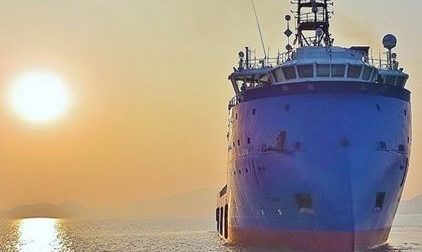Severe prescription list for OSVs

How can OSVs become profitable again? Jason Jiang investigates.
The offshore supply vessel (OSV) sector remains gloomy so far this year and still shows no signs of recovery following a series of consolidation activities in the industry.
What will it take for the OSV sector to improve? Owners and analysts all believe that cutting capacity is one of the top priorities for the industry.
“If I just said scrapping ships you’d say that was the easy answer. But it’s not really any more complicated than that,” says Albert Stein, who leads consulting firm AlixPartners’ shipping team.
“In conventional shipping you can nudge economics of an existing world fleet – such as ballast water treatment, sulphur. Not that it’s been able yet to outstrip the narcotic of newbuilding. But OSVs aren’t particularly polluting, energy consuming or anything else which would regulate obsolescence. So it’s naked supply and demand coupled with a rather binary and brutalist regime of the existence of revenue,” Stein adds.
AlixPartners stated in a July report that 2017 could be one of the toughest years in decades for offshore supply vessel operators.
Venkatraman Sheshashayee, CEO of Singapore’s Miclyn Express Offshore, shares a similar view with Stein. He reckons the industry just needs three things to get back on track – scrapping, consolidation and restructuring with new equity.
Gautam Chellaram, CEO of another Singapore OSV operator, Chellsea, believes a pick up in oil prices to $65 a barrel within the next year and a consequent pick up in E&P expenditure leading to more sanctioning of offshore projects would help the current OSV market situation.
Chellaram also notices that Brazil is evaluating and loosening their local content policies, and if they do along with a higher oil price it will absorb all the excess tonnage in the North Sea.
Furthermore, Chellaram urges that owners need to work collaboratively on scrapping and postpone deliveries of vessels under construction.
“If yards have the muscle power to hold out, it will lead to an increase in newbuilding prices,” Chellaram says.
“Barriers to entry will be much higher in the future, everyone along the supply chain has been burnt and I believe memories won’t be so short unless we see $100 again,” Chellaram adds.
Christian Mellbye, senior consultant at Menon Economics, also reckons that scrapping is essential for the current OSV market.
“As long as OSV companies do not scrap older vessels this will not solve the oversupply in the market. A problem with scraping these vessels are that the offshore fleet is quite young and have little steel-value, making scrapping unattractive,” Mellbye says.
Mellbye reckons in the short-term the market still looks gloomy with rates in 2017 the lowest in more than a decade.
VesselsValue recently noted that 28% of all OSVs are currently laid up.
“We need to see increased drilling activity and second we need to see further action being taken on the supply side,” says Tord Aasen Augestad, equity research analyst at Arctic Securities.
According to Augestad, the first point comes down to offshore E&P spending, which seems to be troughing this year or next and on scrapping it’s harder to see a trigger point.
“We think that a lot of the vessels currently laid up are never returning to work as they become uncompetitive. That means that the current supply side is actually much less than headline numbers suggest. When we will see this impact is hard to say, but within a two to three year timeframe we should have the answer,” Augestad says.
Charlie Hockless, lead offshore analyst at VesselsValue, reckons improving the OSV sector will be no easy task, requiring effort from all sides of the offshore industry.
“To make things worse, the OSV fleet is incredibly young: 63% of the global OSV fleet is 14 years old or younger including the orderbook. To address this, orders for new vessels have stopped, with the last OSV newbuild placed in December 2016, but more could be done to return the offshore industry to a healthier balance,” Hockless says.
According to Hockless, there are 2,200 OSVs which are 25 years of age or older. These vessels, representing 27% of the entire OSV fleet, are perfect candidates for scrap. However, only 44 OSVs have been sold for demolition so far this year, most likely due to the low scrap value of OSVs.
On the demand side, Hockless says it is unlikely that an adequate volume of new projects will be commissioned by oil majors in order to revive the OSV market due to cutbacks in exploration and production, as well as companies adapting to the uncertain market conditions.
“Many drilling projects have been made profitable at the current oil price level due to increased efficiencies by oil majors, but their emphasis will most likely remain on consolidation rather than expansion,” Hockless maintains.
Currently there are still 491 OSVs on order. “Although it is difficult to say at which stage these orders are, it is clear that delivery of these vessels will only exacerbate the problems faced by the OSV sector,” Hockless concludes.
